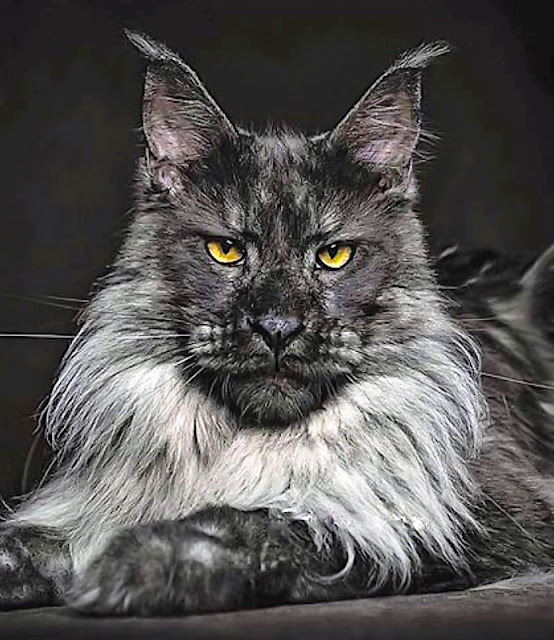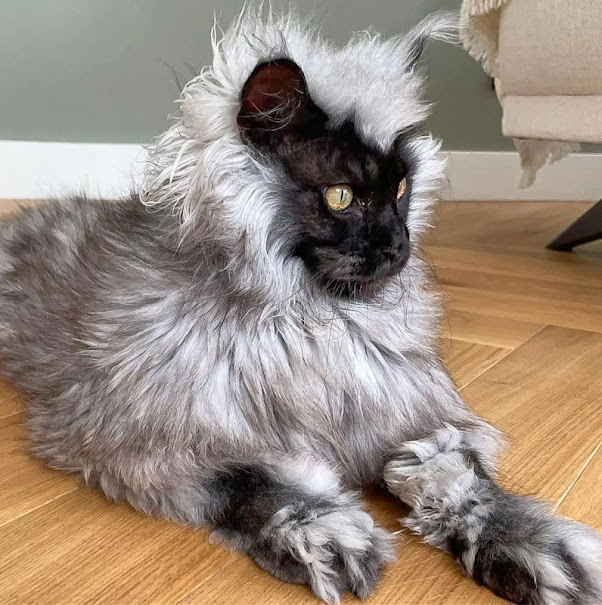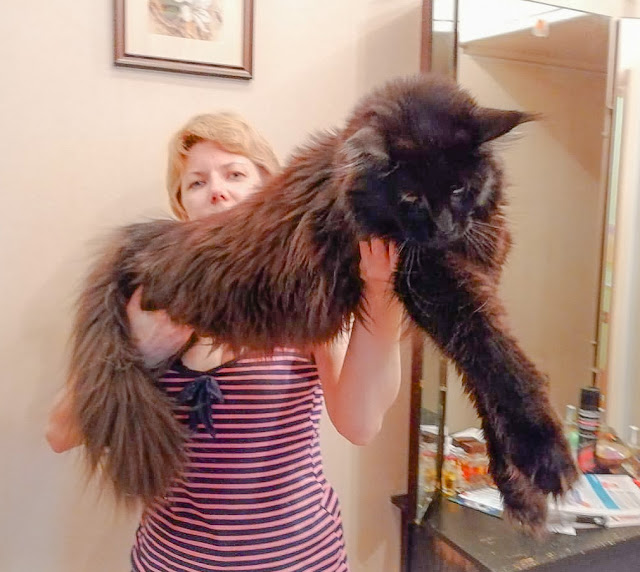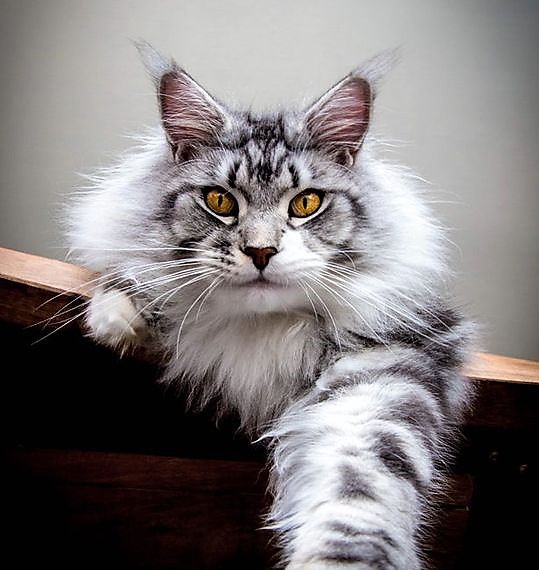Surgery for patellar luxation in Maine Coons can result in a favourable outcome
Patellar luxation can sometimes be found in Maine Coons and non-purebred cats but Maine Coons are at a higher risk for the condition (source: Harlingen Veterinary Clinic). This increased risk is inherited genetically (source: Medical, Genetic & Behavioral Aspects of Purebred Cats).
 |
| Pre and post op for patellar luxation in a cat or dog. X-ray: Animal Medical Center of Southern California. |
Okay, your Maine Coon is more likely than normal to have this disabling condition. The same is said about hip dysplasia which affects 37% of Maine Coons (a higher level of prevalence than for patellar luxation I believe).
ASSOCIATED: Maine Coon Health Problems.
Patellar luxation describes the knee cap of those cats affected sliding to the inside of the leg rather than remaining in a groove as it should. It causes mild to acute lameness. Maine Coons who have the condition try to pop the knee back in place by extending their limb.
What can be done about it? I am sure that many caregivers consider surgery which would seem to be the obvious choice.
ASSOCIATED: Maine Coon cats more expensive to insure than Bengal cats.
The America Veterinary Medical Association (AVMA) conducted a study on the success rate of surgery. Vets grade the degree of lameness and severity of the disease.
They found that "Surgical correction of patellar luxation in cats with grade 2 or 3 lameness can result in a favorable outcome."
I think that is pretty positive. I'd ask my vet about it on that basis with a reasonable expectation of a successful outcome. They said: "Outcome was excellent for 8 of 17 joints treated without surgery and for 23 of 35 joints treated surgically. Complications attributable to surgery were reported in 8 cats."
The AVMA study is called: Clinical signs and results of treatment in cats with patellar luxation: 42 cases (1992–2002).










Comments
Post a Comment
Please share your Maine Coon experiences.